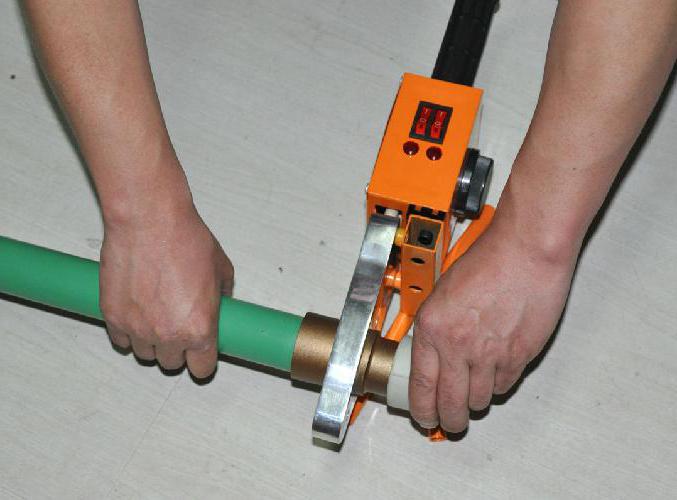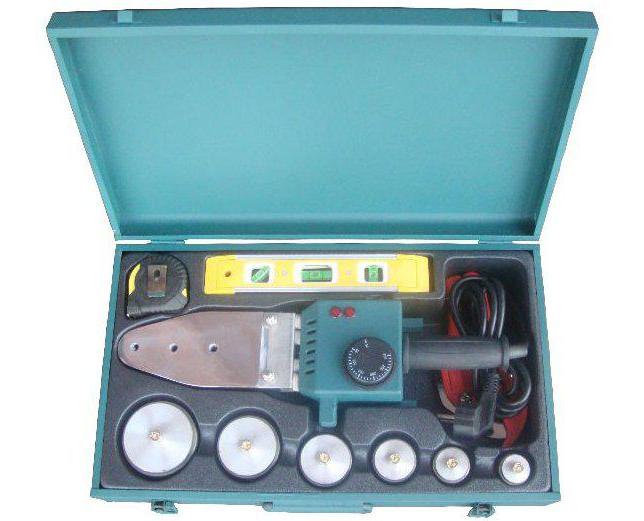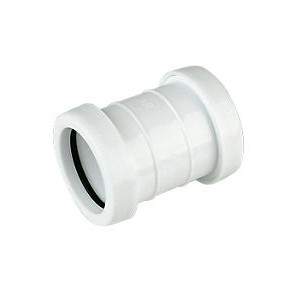Polypropylene (PP) pipes are firmly included in the everyday life of each housing. Their versatility makes it possible to lay water supply systems not only in houses, apartments, but also in suburban areas.
Use of such elements for the systemheating is also one of the most popular destinations. In order for the work to be carried out qualitatively, it is necessary to study the rules and secrets of soldering polypropylene pipes. And it's worth starting to study the characteristics and features of the material.
Types of PP products
There are several options for execution. They can be distinguished by marking along the length of the product:
- PN-10. Applicable for systems with a low head pressure of not more than 1 MPa and a temperature not exceeding 45 ° C. As an option, the device is a water-heated floor.
- PN-16. The pressure in such a system should not be above 1.6 MPa, and the temperature should not exceed 65 ° С. Applied to supply cold water.
- PN-20. One of the most popular species. Used for hot and cold water. The pressure in such a system can be up to 2 MPa, the temperature is allowed up to 80 ° C.
- PN-25. It is used in heating systems. The pressure in the system is up to 2.5 MPa, the temperature is up to 95 ° C.
For private use, pipes from 16 to 110 mm in diameter are used.

Is it difficult to solder polypropylenepipes with their own hands? Instruction for work should be observed exactly, but otherwise the process is not complicated. For pipes there is a whole list of fittings, which should also be studied.
Advantages and disadvantages of PP products
Such systems have a decent list of advantages:
- Durability of the material. Service life is up to 50 years. Achieved due to the absence of corrosive processes.
- Ecological compatibility. Quality material is a guarantee of safety for human health.
- Possibility to hide in a box under the tile. Achieved due to the durability and tightness of the system.
- Aesthetics. Even in the open space, the pipes look neat.
- There is practically no raid within the system. It is achieved due to a smooth inner surface.
- Ease of construction.
- Simplicity of installation works.
- Versatility due to a large number of connecting elements.
- Do not conduct current.
- Of this material, the system is less noisy.
- Do not freeze. Has a good coefficient of elasticity.
The disadvantages can be attributed to the fact that a poor-quality material will fall.
Types of soldering
There are two types of connection - butt and intrumpet. The connection according to the first variant can not withstand at high pressures in the system. Therefore, the most popular and easy way is to connect to the socket using fittings and a special welding machine. As his instruction shows, the soldering of polypropylene pipes must be carried out with exact observance of the technology.

Kinds of fittings and their features
These systems have a large list of connecting parts, which makes it possible to efficiently make wiring:
- Angular 45 ° and 90 °. With their help, the system can be deployed from 45 ° to 135 °. Can be with thread and without it.
- Adapters are double, triple, in four directions. In these variants, there are also threaded variants.
- The outlines. Allow during soldering the system to bypass the intersection of pipes.
- Compensators. They look like a loop.They are installed to stabilize the pressure in the system. This greatly extends the service life of the pipeline. You can collect manually by means of fittings, but it is cheaper to buy the finished version.
- Cranes and valves. Locking elements used in the operation of the pipeline.
- Caps. When repairing, for example, a bathroom, some of the pipes are muffled until the end of the tiles. This helps to avoid clogging before installing plumbing and water leaks.
- Fasteners. Allow to fix pipes to surfaces.
Selection of pipes and fittings for them
First of all, you should draw a connection diagram for proper calculation of the material.

The instruction for soldering polypropylene pipes indicates that the fittings are selected taking into account the required parameters and must coincide with the outer diameter of the pipes.
Tool for work
The following list will be required:
- Welding machine for polypropylene pipes with nozzles;
- roulette;
- marker;
- special cutter;
- stand for equipment;
- carrying or extension;
- protective gloves;
- instructions.
Soldering of polypropylene pipes should take place after acquaintance with the technical documentation for the equipment.
Welding machine for PP products
As a rule, such equipment is sold in a separate suitcase. The kit includes:
- Cutter for PP material. Sometimes you have to buy this tool separately, because the bundle may contain poor quality.
- Nozzles for different pipe diameters.
- The welding machine itself.
- Keys for installing attachments.
- Instructions. The soldering of polypropylene pipes, as well as the maintenance of the equipment, must take place in accordance with this technical documentation.
Instruction - preparation for work
For welding the system, the ambient temperature must be at least five degrees.

Pipes and fittings should be arranged in such a way that they do not interfere with the work, but at the same time must be in an easy and quick admission. Pull out the cutter next to the material.
Welding machine to get out of the package.Select the required nozzles. One must be a mandrel, the second sleeve. The first is used to warm the inside of the fitting, the second is used for the outside of the pipe. Install on the equipment and secure. Put the device on a stand. Connect to the network, set the desired temperature regime (usually set to 260 ° C), turn on. Make sure that the welding surface is not in contact with anything.
As the instruction indicates, the soldering of polypropylenepipes should be carried out only after the apparatus is fully heated. For this purpose, the buttons are illuminated on the equipment and the indicator goes out with full warming.
Instructions and tips for soldering polypropylene pipes
Soldering of pipes has several stages, which allow to achieve an ideal result:
- Cut the desired length of the pipe. Make a smooth cut, uncut. For this, a cutter is used. It should be sharp, the blades should not hang out.
- Зачистить края от заусенцев и пластиковой крошки.Degrease the surface. If inside the water - wipe with a cloth. In any case, both the fitting and the pipe on the cut must be clean and dry. If a piece reinforced with foil is used, the top layer should be removed. Otherwise, the soldering will not be possible.
- Try on the items. Make a mark on the pipe for an even connection with the fitting. In principle, this is an optional procedure. Depends on the experience of the welder.
- When the soldering of polypropylene pipes takes place, the instruction should be already studied, including the safety section during work.
The welding process will be handy by two, but it can be done by yourself.

Wearing to the limit, it is worth waiting for time according toinstructions. It will necessarily place a table with the exact data. At the same time, remove both elements and insert each into each other with a twisting motion, again wait for the time according to the instructions. At the junction should form an influx. It will provide a sealed connection.
There are very complex transitions and connections. These are better to solder parts.

As you can see, the process is simple - soldering polypropylene pipes. The instruction, as to solder, should be near at hand. It will give full information on the time of heating the pipe and soldering.
note
It is necessary to adhere to the safetywork. Avoid contact with heated elements during welding. After work should be turned off and allow the equipment to cool before cleaning it.
The main mistakes in the welding, soldering of polypropylene pipes
And now the system is ready. The pressure is made, and the joints flow. It seems that everything was done on technology, and such a trouble came out. What can be the problem:
- The pipes were not warm enough. As a result, the seam turned out to be leaky.
- Poor integration. When the pipe and the fitting are connected, there is no tight joint. The work must be done with pressure and inserted as far as it will go.
- Are not cleaned from the burr edges. As a result, a gap may form.
- The fitting or the end of the pipe was wet. Water will not give a full fit.
- Pipe and fitting from different manufacturers. Also, a loose soldering may occur due to the difference in chemical constituents.
And it can turn out the opposite effect - the water does not go through the pipes.













